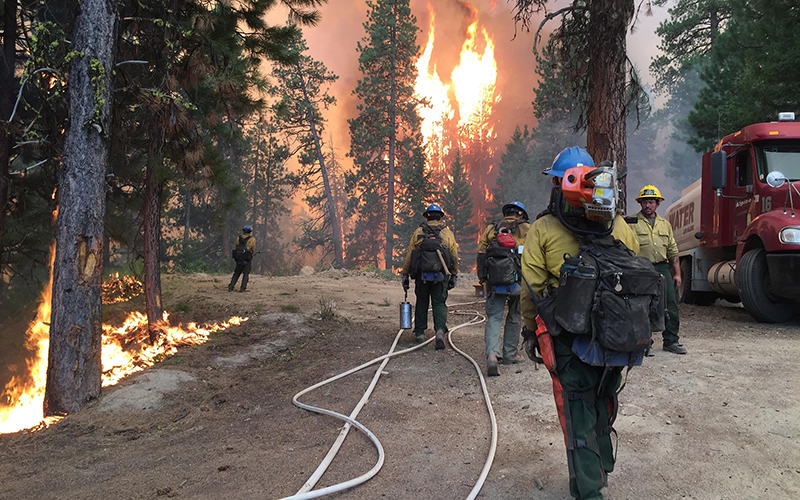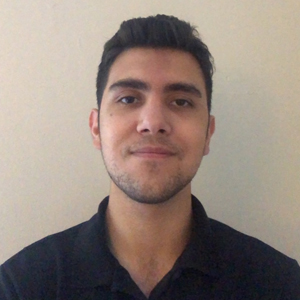
Fire officials say they were able to contain the spread of COVID-19 in crews through commonsense measures as well as some precautions specific to their work, even though it made their jobs more challenging at times. (File photo courtesy U.S. Forest Service)
WASHINGTON – Battling wildfires while battling the COVID-19 pandemic “definitely added a new challenge” for Arizona fire officials this year, but it’s a challenge many say they have met.
Exact numbers are hard to come by, but calls to fire departments around the state found most officials reporting only a handful of positive test results on their crews – and they believe many of those came from exposure off the job.
“We’ve had one or two people off a hotshot (wildfire) crew test positive but the rest of the crew tested negative,” said Todd Abel, wildland and battalion chief for Central Arizona Fire and Medical Authority. “That’s just my personal experience, there haven’t been a lot of positive cases during an assignment and just a few of them post-assignment.”
Jayson Coil, assistant chief of operations at the Sedona Fire District, said Arizona firefighters have been “doing an excellent job” juggling COVID-19 protocols and firefighting duties.
“We’re asking people to change health behaviors in a difficult environment and we need to be considerate of those environmental factors,” Coil said. “The only way that we’re going to do this together is to continue to focus on those ways we know are effective to reduce transmission (of COVID-19).”
Those ways included precautions recommended for everyone, such as mask-wearing and social distancing, as well as some specific to firefighters, like sanitizing equipment on site and sleeping 6 feet apart in fire stations and camps.
“As far as wildland fires are concerned, we’re trying to isolate, we do daily health checks,” said Brian Katrales, captain and public information officer at Highlands Fire District in Flagstaff.
He said screenings include regular temperature checks of firefighters as well as checking for exposure to anyone known to have the coronavirus.
“We’re also trying to isolate ourselves as much as possible on wildland fires,” he said. “We’re trying to be as self-sufficient as possible.”
The changes came during one of the busiest wildfire seasons in recent years, which made keeping safe all the more challenging.
Abel said the pandemic “definitely added a new challenge to a very complex situation when you’re dealing with wildland firefighting.” While social distancing and mask-wearing have been successful in curbing the spread of the virus, they can also interfere with communication needed to plan and execute wildfire operations.
“We are very proactive in trying to paint that common operating picture so everybody knows why we’re doing what we’re doing and what the end stage should look like,” Abel said. “When you add COVID to it, with social distancing and the mask wearing, it kind of took away that ability to make sure that common operating picture … was common amongst us all.”
Not all preventive measures took place in the field. Goodyear Fire Chief Paul Luizzi said his department sanitizes fire station surfaces and takes firefighters’ temperatures twice a day. Crews also sanitize equipment on site at fire calls, to avoid bringing contaminated gear back to a station.
Glendale Fire Public Information Officer Ashley Losch said that getting enough personal protective equipment for the city’s firefighters was a priority at the beginning of the pandemic.
“Making sure we had enough PPE for everybody to go around … masks and gowns, eye protection,” Losch said of the department’s initial efforts. “Making sure we were deconning (decontaminating) appropriately after a call.”
She said those efforts, in addition to recent mask regulations, have “kept us from seeing huge numbers in our department as well.”
Losch said changes have been made not just in wildlands but in calls for house fires and medical emergencies. The four-person crew that typically responds to medical or fire calls is still dispatched, she said, but the entire crew will not be required to enter the home of a known COVID-19 patient.
“I think our exposure levels may change where we may not have an entire crew go into the home of a known COVID-19 patient,” Losch said. “If we can minimize that exposure, we will do so.”
Scottsdale Fire Deputy Chief Adam Hoster said contact tracing by his department has found that most positive test results for firefighters often occur after that person is “out and about with family or friends.” Of the “fewer than 10” positive COVID-19 tests since the start of the pandemic, “a majority of them have been contracted not while being on the job,” he said.
Like Losch, Hoster said an important element for his department was ensuring a “surplus of N-95 masks, gloves, gowns and eye protection” for its crews.
“Since then (the start of COVID-19), we’ve also had industrial cleanings of all of our fire stations,” Hoster said. “I don’t want to say we’re going back to normal, but we’re pretty darn close.”
One option that was not on the table for any of the fire officials was cutting back on service.
“We still have a job to do, we still have to serve the public, we still have to do it safely and it’s important to have the proper amount of people responding to incidents that require four people,” Losch said.
Luizzi stressed the importance of transparency in the Goodyear Fire Department as well as in the community.
“Really involving as many members of the department to let them know, understand how and why we’re making these changes to a decision. That communication is definitely key during the pandemic,” Luizzi said.
Because, as he notes, “we’re still doing car seat inspections.”

